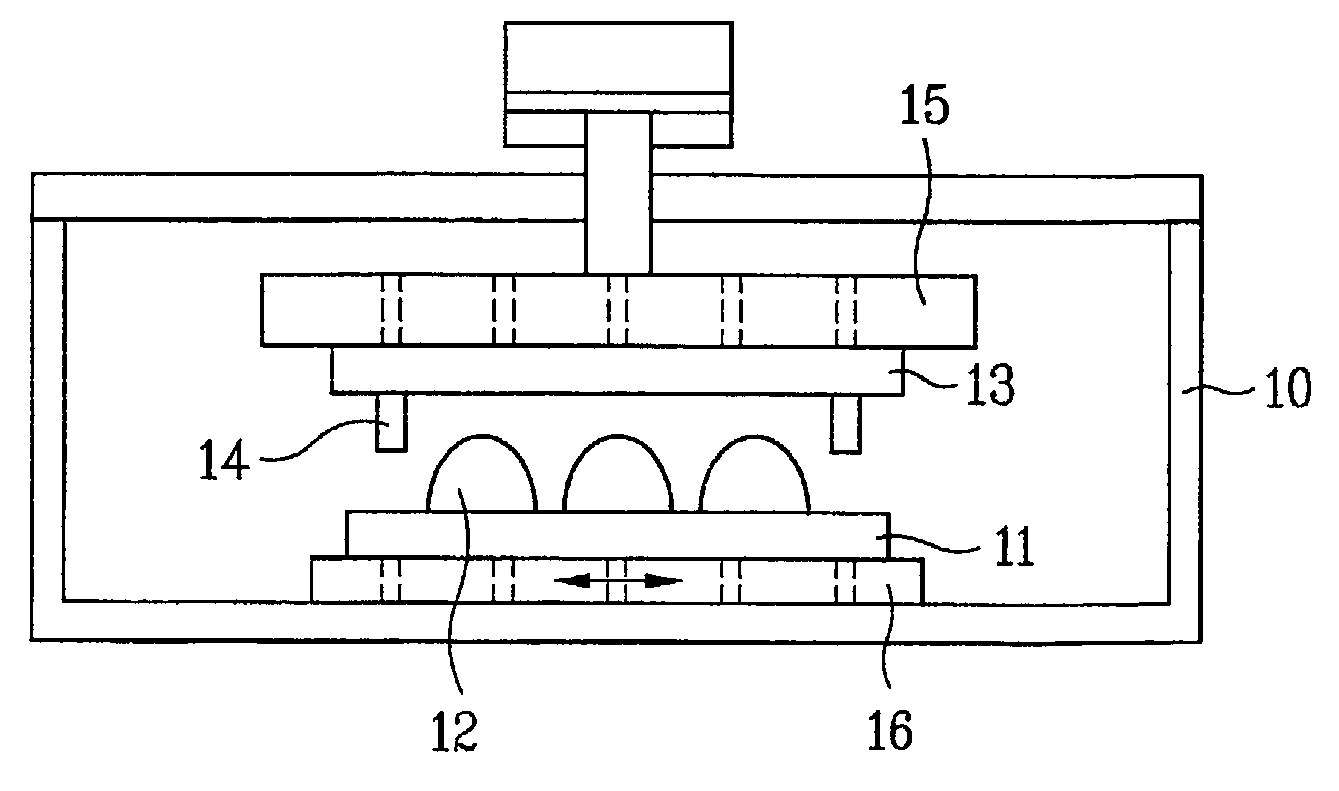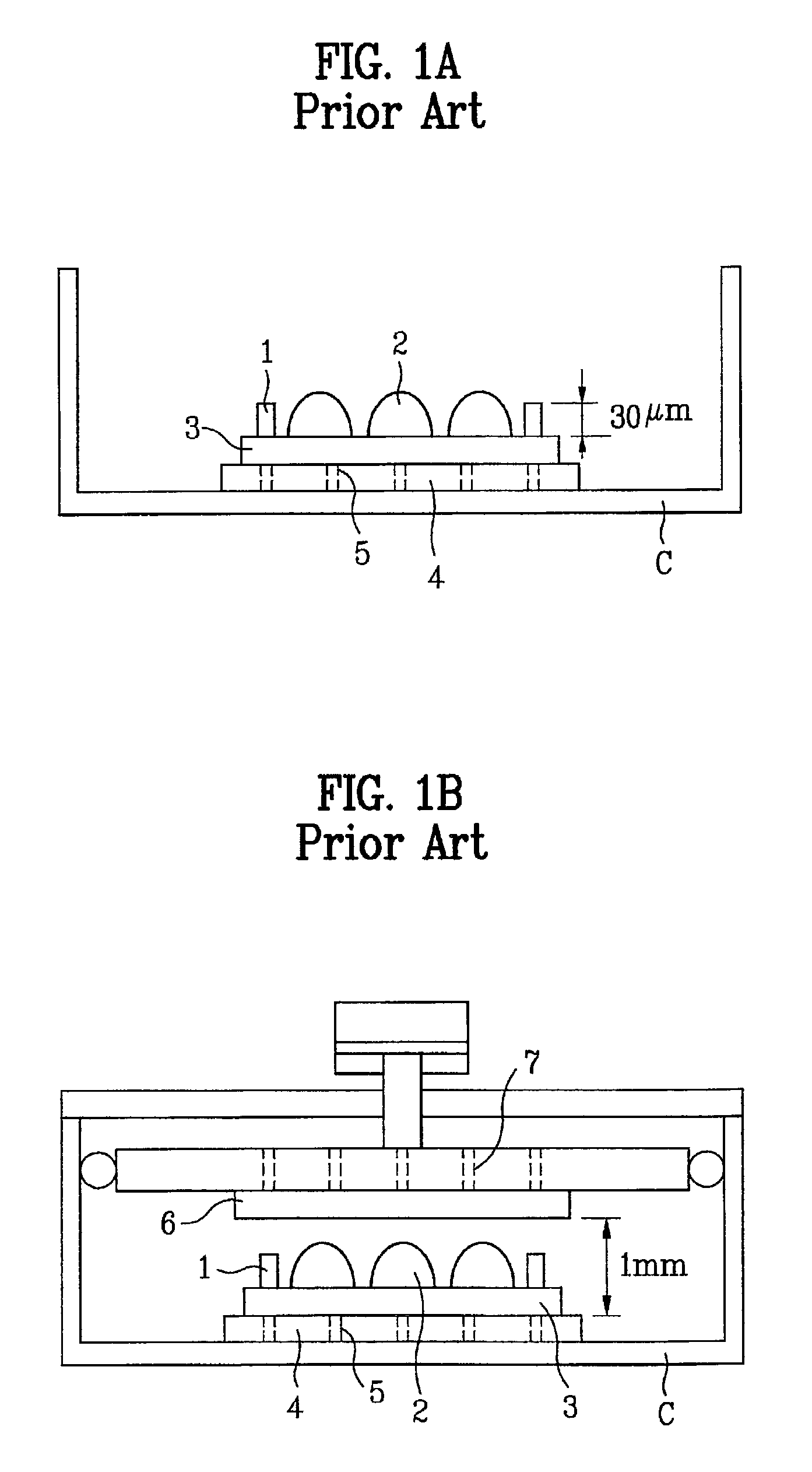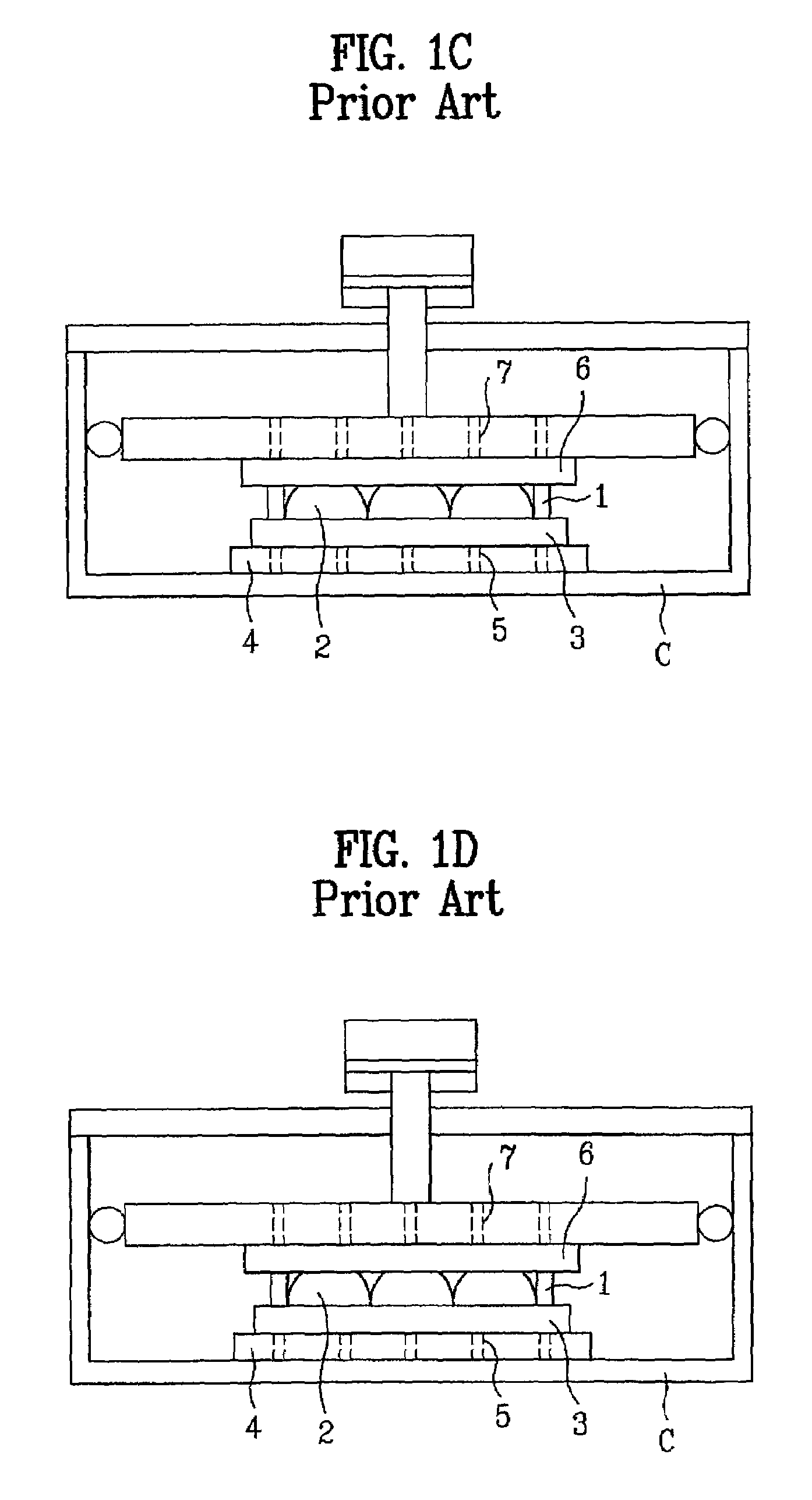Method for fabricating LCD
- Summary
- Abstract
- Description
- Claims
- Application Information
AI Technical Summary
Benefits of technology
Problems solved by technology
Method used
Image
Examples
Embodiment Construction
[0046]Reference will now be made in detail to the preferred embodiments of the present invention, examples of which are illustrated in the accompanying drawings.
[0047]FIGS. 2A–2G schematically illustrate the steps of a method for fabricating an LCD in accordance with an embodiment of the present invention.
[0048]Referring to FIG. 2A, liquid crystal 12 may be applied to a first glass substrate 11, and seal 14 may be coated on a second substrate 13. A plurality of corresponding areas designated for panels may be provided in first and second glass substrates 11 and 13, and thin film transistor arrays may be formed on each of the panels within the first glass substrate 11 while color filter arrays, black matrix layers, a color filter layers, common electrodes, etc., may be formed on each of the panels of the second glass substrate 13. Liquid crystal material 12 may be applied onto the first glass substrate 11 and a seal 14 may be coated onto the second glass substrate 13. Alternatively, ...
PUM
 Login to View More
Login to View More Abstract
Description
Claims
Application Information
 Login to View More
Login to View More - R&D
- Intellectual Property
- Life Sciences
- Materials
- Tech Scout
- Unparalleled Data Quality
- Higher Quality Content
- 60% Fewer Hallucinations
Browse by: Latest US Patents, China's latest patents, Technical Efficacy Thesaurus, Application Domain, Technology Topic, Popular Technical Reports.
© 2025 PatSnap. All rights reserved.Legal|Privacy policy|Modern Slavery Act Transparency Statement|Sitemap|About US| Contact US: help@patsnap.com



